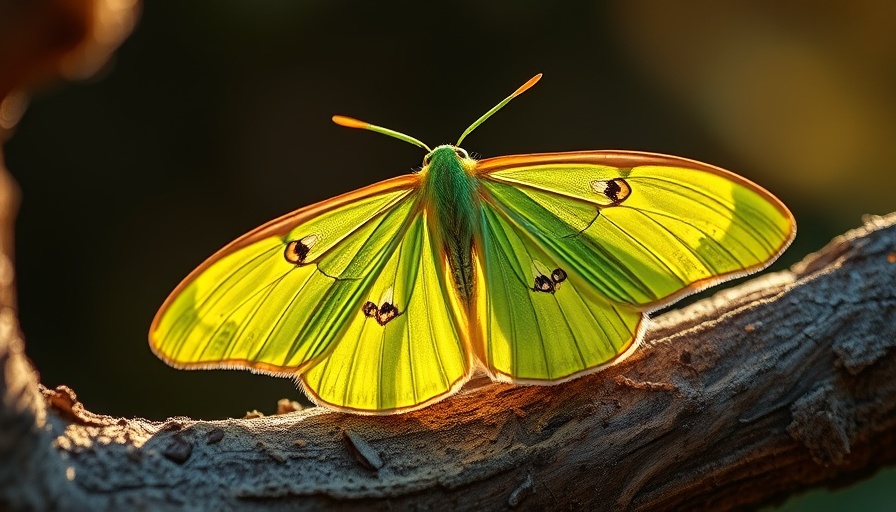
Unveiling the Magic of Nocturnal Pollination
When we think about pollination, images of bees buzzing around flowers during the day typically come to mind. However, a groundbreaking study from Lund University has shed light on the mystical world of nocturnal pollinators. This research reveals that nighttime pollinators, like moths, play a vital role in plant reproduction that is often overshadowed by their daytime counterparts.
Nocturnal Pollinators Matter Just as Much
The study found that in an astonishing 90% of cases examined, moths and other nocturnal pollinators were equally essential as bees and butterflies. This challenges long-held assumptions about which pollinators are most crucial to plant health. Interestingly, it suggests that plants may be more flexible in their requirements for pollination than previously thought. Many can thrive on the contributions of different species across both day and night cycles.
A Dive into Research Findings
Researchers Liam Kendall and Charlie Nicholson sifted through data from 135 global studies, which focused on 139 plant species. They found that the time of day did not significantly impact reproductive success for most plants. “It’s easy to assume that a specific plant needs a specific pollinator,” Kendall noted, “but our analysis actually showed almost the opposite. There’s much more flexibility.”
The Importance of Diverse Pollination
This diverse pollination is not just academically interesting; it has real-world implications for agriculture and ecosystem health. As our ecosystems face mounting pressures—be it climate change, habitat loss, or pollution—the realization that we need to protect all kinds of pollinators becomes vital.
Shifting Perspectives: Protecting Nocturnal Allies
Despite the crucial role they play, nocturnal pollinators receive far less recognition and protection compared to their daytime counterparts. Awareness programs targeting these unsung heroes of the night can shift public perception and lead to better conservation efforts. This insight serves as a wake-up call, encouraging environmental advocates and everyday citizens alike to look closer at who truly aids our plants.
Future Outlook: Integrating Nocturnal Pollinators in Conservation
Looking forward, integrating nocturnal pollinators into conservation strategies is not just advisable—it’s essential. With ongoing climate changes affecting ecosystems, a comprehensive understanding of both day and night pollinators can greatly enhance biodiversity and resilience. As we embark on this journey of ecological awareness, we must value all pollinators equally.
How to Encourage Nocturnal Pollination in Your Gardens
If you’re eager to support nocturnal pollinators in your own garden, consider implementing these simple tips: plant night-blooming flowers like evening primrose and night phlox, create cozy habitats with native plants, and avoid pesticides that can harm these crucial pollinators. By embracing the secrets of the night, we can enhance our gardens' health and engage with nature in previously unexplored ways.
As we delve deeper into this mysterious world, it becomes clear that all pollinators, be they daytime or nighttime, deserve our attention and protection. Recognizing the value of nocturnal pollinators is crucial in nurturing not just a healthier environment, but also ensuring a sustainable future for food production. For those interested in sustainable gardening practices and supporting essential ecosystem functions, engaging with this knowledge will foster a greater awareness of how we interact with nature.
 Add Row
Add Row  Add
Add 




Write A Comment